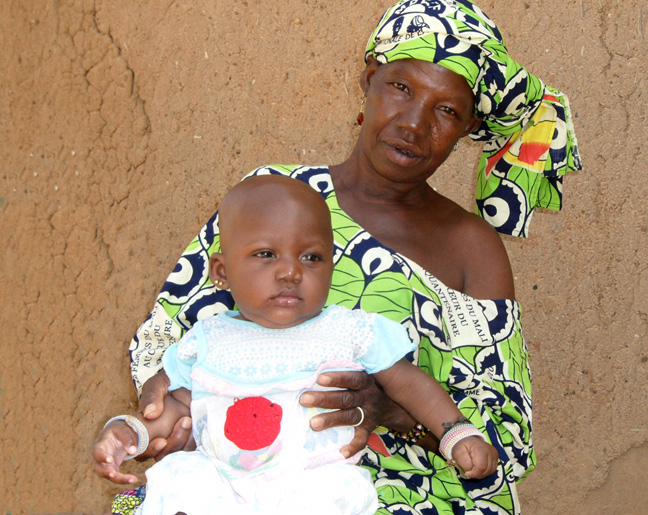

Reducing child deaths in Mali

The people of Koundiala lack everything. This village of 2,000 in the heart of Mali has no health or social infrastructure, the rains are scarce, extreme poverty is pervasive and the child mortality rate is among the highest in the world: nearly one in five children dies before the age of 5.
Habi Karembé was born here six months ago. Within three days, her mother was dead of complications from childbirth. When Habi was brought to the MDG-F-supported village health center in the nearby town of Bandiagara, she was one month old and weighed just 4-1/2 pounds.
The nutritional status of children in Mali is grim. One in six suffer from acute malnourishment and 38% are stunted from a lack of proper nutrients. Though Mali has made progress in reducing child deaths, more than 50% of those that occur are due to malnutrition.
To assist the government in reaching the Millennium Development Goal of halving child deaths by 2015, the MDG Achievement Fund is financing a joint United Nations programme to improve the nutrition of women and children in the most vulnerable areas of the country, where 84% of families do not have enough to eat.
The programme focuses on strengthening these families’ food security by promoting local food production, improving the government’s ability to evaluate nutritional trends and respond to rising food prices, and providing quality services for preventing and treating malnutrition.
Habi Karembé’s care produced quick results. Within one month of her arrival at the Unit for Recovery and Nutrition Education, she had doubled her weight. By the time she was discharged, four months later, she weighed 15 pounds, and was ready to go home to her overjoyed family.
To prevent such cases of malnutrition, the Joint Programme is also teaching farmers like Habi’s father techniques to improve their agricultural production and is helping establish school vegetable gardens where children learn the importance of growing and eating healthy foods.
The programme is also coaching expectant mothers on the importance of exclusive breast-feeding, as well as the value of hand-washing to lower the incidence of disease and the use of mosquito nets to prevent malaria infection. It includes weekly vitamin supplements to pregnant women and children and serves 78,000 people in the targeted communities.
At the government level, the Joint Programme – a collaboration between the WFP, UNDP, FAO, UNICEF and WHO – is helping to ensure that nutrition is incorporated into local planning. It is also building the capacity for monitoring and evaluating nutrition trends, and creating and implementing nutritional programmes where they are most needed. It will also support regular monitoring of how rising food prices are impacting the nutritional status of women and children.
The joint programme is part of the MDG-F’s global effort to help governments achieve the anti-poverty Millennium Development Goals, with a particular focus on reaching the poorest and most vulnerable populations.
Photo: Habi Karembé with her grandmother.
Click here to read about the MDG-F's work in Mali.
Click here to read other success stories from our work to fight poverty and improve livelihoods around the world.